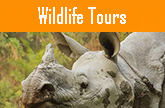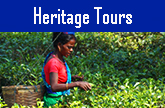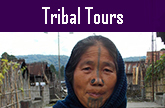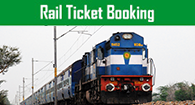Assam Tour
Tour Duration : 9 Nights / 10 Days
Travel Season : October to May
assam tour itinerary:
Day 01: Arrive Guwahati
Meet upon arrival at Guwahati Airport / Railway Station.
Guwahati:
Guwahati, 'the city of Eastern light' stands on the southern bank of the mighty river Brahmaputra. It is the capital city of Assam and the gateway to the entire north-eastern states. Modern Guwahati is the hub city of Assam. It fulfills every aspect of a metropolitan city with its advanced means of transport, communication and media, as a major center of business activity, educational institutions, and various administrative and political activities of entire Assam. Besides, its landscape surrounded by hills and the mighty Brahmaputra River, rich and diverse flora and fauna enhances its natural scenic beauty.
After arrival, check-in at hotel. Afternoon, visit in Guwahati -
Kamakhya Temple:
Kamakhya Temple, one of the greatest 'Shaktipeeth', the shakti shrine of Goddess Kamakhya is situated on the Nilachal Hills. It is the oldest center of Tantric Shaktism. A famous legend regarding the birth of the Kamakhya temple narrates that Lord Shiva, rage with anger at his wife Sati's death, wandered the entire earth carrying Sati's corpse. An organ of Sati fell here and eventually the place became a temple of worship in due course of time. The temple features various stone inscriptions, terracotta works, sculptures and idols of Ganesha and Chamundeswari which are worth mentioning. The famous 'Ambubachi Fair' is celebrated with great enthusiasm every year in mid-June in this temple and devotees from different parts of India throng into it for the special occasion.
Srimanta Sankardev Kalakshetra:
Sankardev Kalakshetra is named after the most illustrious son and Vaishnavite propagator of Assam. It is the hub of all the cultural activities of entire Assam and a center for the promotion and preservation of the cultural heritage of the various tribes, communities and ethnic groups of Assam. It consists of a museum wherein lies the various traditional dresses, jewelry, ancient pottery, weapons belonging to various ethnic groups, sculpture, and works of art created by various artists depicting as a whole the entire Assam. The open air amphitheatre, wherein the cultural performances are held very often and the collection of whole life activities of the legendary artist Dr. Bhupen Hazarika carry a great measure in Kalakshetra.
Overnight: Stay in hotel.
Day 02: Guwahati - Hajo - Sualkuchi - Guwahati (38 kms one way, 1 hr drive)
In the morning after breakfast, take transfer to Hajo and Sualkuchi.
Hajo:
The meeting point of three religions - Hinduism, Islam and Buddhism, Hajo is a famous pilgrim hub of Assam which serves as a main centre reflecting Assamese culture and learning. This holy place is marked by five major ancient temples and artifacts representing Assamese art & culture. The Hayagriva-Madhab temple, an ancient stone temple of Hajo, situated on the Monikut Hill is dedicated to Lord Vishnu. It is a famous pilgrimage centre for the Buddhists and Hindus where devotees celebrate Doul, Bihu and Janmastami with great pomp and joy every year. Poa Mecca is the Muslim pilgrimage centre at Hajo. It is popularly believed that devotees achieve one fourth spiritual enlightenment of what could be gained at Mecca by offering prayer to the Lord in this holy mosque.
Sualkuchi:
Popularly known as 'Manchester of the East', Sualkuchi is the major centre for commercial production of Assam textile- 'Muga', 'Paat', 'Eri' and 'Endi' cloths and is globally famous for cottage and handloom industries. Sualkuchi is regarded as the paradise of the extremely beautiful Assam silk woven in almost every household.
Later, return to Guwahati. Evening: Optional Activity - Spend some quality moments with your spouse / family / friend experiencing the dinner cruise tour in the mighty Brahmaputra River.
Overnight: Stay in hotel.
Day 03: Guwahati - Manas National Park (136 kms, 3 & 1/2 hrs drive)
In the morning after breakfast, visit in Guwahati -
Navagraha Temple:
Built by the Ahom king Rajeshwar Singha in 1752 AD, Navagraha temple stands on the crest of the Citrachala hill, situated in the south-east of Guwahati. The temple possesses nine Shiva lingas representing the nine sacred planetary Gods. The temple continues to be a center for the study of astrological and astronomical research.
Umananda Temple:
It is a legendary temple of Lord Shiva built by Ahom King Gadadhar Singha in 1664 AD. The temple is standing in an island hill in the middle of great Brahmaputra River. The temple possesses rock-cut figures and sculptures of God Surya, Ganesha, Shiva and Vishnu along with his ten incarnations. The temple is a major centre for the celebration of Shivaratri. The easiest means of transport to this temple is country boat or engine boat which is an added attraction to the tourists.
Later, take transfer to Manas National Park.
Manas National Park:
Manas National Park, a UNESCO World Natural Heritage Site, is situated on the foothills of the Himalayas in the district of Barpeta. It is a famous Tiger Reserve of Assam. It encompasses an area of 519.77 sq km and is a home to many rare and endangered species of flora and fauna. It's rich bio-diversity and wealthy wildlife enhances the scenic beauty and glory of this park. Around 550 varieties of plant species identifies the rich flora of Manas National Park. It is a homeland to 60 species of mammals, 435 species of birds (10 species are globally threatened), 42 species of reptiles and amphibians, 54 species of fishes and 103 species of invertebrates.
Manas National Park is an ideal habitat to rare species such as One Horned Rhinoceros, Asian Elephant, Royal Bengal Tiger, Pygmy Hog, Hispid hare, Golden Langur, Bengal Florican, Gaur, Assam Roofed Turtle and Rat Snake. Leopard, Clouded Leopard, Himalayan Bear, Wild Boar, Sambar, Swamp Deer, Hog Deer are the common inhabitants of this park. Hundreds of migratory birds like Riverchats (White Capped Redstars) Forktails, Cormorants and Ruddy Shelduck visit this park during the winter season. Click in the link to view Clements Check-list of birds (6th edition, updated in 2012) found in Manas National Park -
manas national park birds check-list
Arrive at Manas National Park area and check-in at jungle cottage.
Overnight: Stay in jungle cottage.
Day 04: Manas National Park
Elephant Safari:
In the early morning hours, enjoy an elephant ride in the Bansbari range of Manas National Park.
River Rafting:
In the morning after breakfast, enjoy a mild river rafting at Manas River adjoining to Manas National Park. (Optional Activity)
Tea Factory:
Later, visit a tea factory of Assam Tea Garden to witness the processing of world famous Assam CTC Tea.
If time permits, make a visit to the local market and local village to have a glimpse into the lives of indigenous tribal people.
Jeep Safari:
Post lunch, enjoy one round of Jeep safari in Manas National Park covering Bansbari and Mothanguri ranges of the National Park.
Overnight: Stay in jungle cottage.
Day 05: Manas National Park - Kaziranga National Park (360 kms, 8 hrs drive)
In the early morning after breakfast, take transfer to Kaziranga National Park. En-route visit -
Madan Kamdev Temple:
Tezpur:
Tezpur, the 'city of love' is situated on the northern bank of the Brahmaputra River. The ancient name of Tezpur was Sonitpur, the kingdom of the mighty legendary king, Baan Raja. It was the capital city under his reign. Tezpur holds in its heart many ancient historical events, and witnessed many legends and mythological wars of ancient Assam. The occurrence of a famous war named 'Hari-Hara' is related with the attainment of the present day Tezpur. This battle led to the bloodshed of so many soldiers that the entire place was stained with blood and hence the city came to be known as Tezpur ('Tez' meaning blood and 'pur' meaning city in Assamese language). Present day Tezpur was founded by the British colonial administration in 1835 as the headquarters of Darrang district.
If time permits, visit at Tezpur -
Agnigarh:
Legend speaks of Agnigarh as a fortress built by Baan Raja in order to keep his daughter in isolation. The word 'Agnigarh' is a derivation of two Sanskrit words: 'Agni' meaning 'fire' and 'garh' meaning 'fort'. Situated on the north bank of the Brahmaputra River, it maintains its gracefulness with its lush green landscapes of the river. Nowadays, magnificent works of sculpture are depicted referring to the love story of Usha-Aniruddha and Great War 'Hari-Hara Juddha'.
Mahavoirab Temple:
Mahavoirab temple is the oldest Shiva shrine, where the second biggest Shiva linga of the world is worshipped. The temple was built by King Baan, the ruler of Sonitpur in 10th century. King Baan's daughter Princess Usha was a devotee of Lord Shiva and visited the temple for daily worship. Thousands of devotees gather during Shivaratri every year to offer prayers in this temple.
Later, depart to Kaziranga National Park.
Kaziranga National Park:
Internationally popular forest reserve and a UNESCO World Natural Heritage Site, Kaziranga National Park is situated on the northern banks of the mighty river Brahmaputra, spreading wide on both the Golaghat and Nagaon districts of Assam. It covers an area of over 430 sq km. Its landscape is characterized by swamps, beels, tall elephant grass, flat grasslands with streams.
Kaziranga National Park supports a variety of flora and fauna. It is mainly the undistributed residence of the Great One horned Rhinoceros. It is also a home to a large population of Indian Elephant, Wild Water Buffalo, Swamp Deer, Indian Boson, Royal Bengal Tiger, Sloth Bear, Hog Deer, Leopard Cats, Otter, Hog Badger, Capped Langur, Hollock Gibbons, Wild Boar, Jackal, Pythons, Monitor Lizard, and Fishing Cat etc. Small mammals like the rare Hispid Hare, Indian Gray Mangoose, Large Indian Civet, Small Indian Civet, Bengal Fox, Golden Jackal, Chinese Pangolin, Indian Pangolin, Hog Badger, Chinese Ferret Badger, Parti-colored Flying Squirrels etc. are also found here. Click in the link to view ->
kaziranga mammals check-list and
More than 500 species of birds have been recorded in Kaziranga National Park including 26 species of globally threatened category. Migratory birds like Lesser White Fronted Goose, Ferruginous Duck, Baer's Pochard Duck and Lesser Adjutant, Greater Adjutant, Black Necked Stork, Asian Openbill Stork etc. migrate to this park during the winter season every year. It is also a habitat of threatened species like Blyth's Kingfisher, White Bellied Heron, Dalmatian Pelican, Spot-billed Pelican, Nordmann's Greenshank, Black-Bellied Tern and other birds like the Eastern Imperial Eagle, Palla's Fish Eagle, Grey Headed Fish Eagle, Lesser Kestrel, Indian Vulture, Slender billed Vulture, Indian White-rumped Vulture, Swamp Francolin, Bengal Florican, Pale- Capped Pigeon, Black Breasted Parrotbill and Rufous vented Prinia etc. It is also a home to the endangered Gangetic Dolphin. Besides there are more than 40 species of fishes and 42 species of reptiles are found in Kaziranga National Park. Click in the link to view Clements Check-list of birds (6th edition, updated in 2012) found in Kaziranga ->
En-route visit -
Gajraj View Point and Kanchanjuri View Point
at Burha Pahar Range of Kaziranga National Park.
Arrive at Kaziranga and check-in jungle resort.
Overnight: Stay in jungle resort.
Day 06: Kaziranga National Park
Elephant Safari:
In the early morning, enjoy an elephant ride in the western range (Bagori) / central range (Kohora) of Kaziranga National Park.
In the late morning after breakfast, take a visit to the Ethnic Village of Kajir Ronghangpi Aklam, Kohora and explore the way of living of North Eastern People. Have a glimpse of Assam tea plantation. Observe the teams of colorfully dressed tea garden female workers plucking the delicate buds and leaves with their nimble fingers. Also, visit the company outlet of Hathikuli Tea Estate for purchasing different kinds of organic Tea.
Later visit -
Kaziranga National Orchid and Bio-diversity Park:
Witness more than 500 varieties of wild orchids collected from different parts of North-East Indian states, 132 species of sour fruits and leafy vegetables, 12 species of cane, 46 species of bamboo and a large variety of local fishes in Kaziranga National Orchid and Bio-diversity Park, located in Durgapur.
Also visit - Souvenir shops of bamboo and wooden products near Orchid Park at Kaziranga.
Jeep Safari:
In the afternoon post lunch, enjoy one round of Jeep safari in the central range (Kohora) / western range (Bagori) of Kaziranga National Park.
If interested, visit in the evening - Kaziranga Orchid Park again to enjoy special cultural show of different folk dances of Assam.
Overnight: Stay jungle resort.
Day 07: Kaziranga National Park - Majuli Island (113 kms, 2 & 1/2 hrs drive & 1/2 hr ferry ride)
In the morning after breakfast, take transfer to Majuli Island. En-route cross - the Brahmaputra River by local ferryboat.
Majuli Island:
Majuli, the largest river island in the world, is being short listed for future status of UNESCO World Cultural Heritage Site. The formation of this river island dates back to 1691 AD, when a great flood swept Assam and created a new island in the midst of river Brahmaputra. Majuli is acclaimed mainly as the main centre of vaishnavite culture and satras of Assam. Srimanta Sankardeva, the Vaishnava saint and religious reformer of vaishnavism and his disciple Madhavdeva took forward the vaishnavite culture at Majuli. The first satra (monastery) was established at Belguri, the western part of Majuli.
The satras represent the preservation and propagation of socio-cultural ethics and ideals of Assam. There had been about 66 satras at Majuli. At present, only 31 of them are survived. These satras are great places of visit during the Raas festivals. Majuli also appeals tourists for its various attractions like rare seasonal migratory birds, display of various collection of traditional handicrafts, pottery, various ethnic dance forms, religious and mythological-based dramas etc.
At Majuli, a rare sight of Gangetic River Dolphin in the mighty Brahmaputra River may be an experience for lifetime.
Arrive at Majuli and check-in at traditionally built Bamboo Hut. Later visit -
Auniati Satra:
Founded by Niranjan Pathakdeva, the main attraction of this vaishnavite satra are its Paal Naam Ceremony, Dashavatar dance and Puppet shows. The satra also offers a magnificent display of ancient collection of utensils, jewelry and handicrafts representing Assamese culture.
Uttar Kamalabari Satra:
Uttar Kamalabari satra, a part of the actual Kamalabari Satra was founded by Padma Aata or Badula Aata, a disciple of Shri Shri Madhavdeva. It is a centre of Assamese art, culture and cultural studies. The satra is famous for Ankia Naat drama and Saali dance forms. It also has a branch in Guwahati. This branch has displayed Sattriya dance in many states of India and abroad.
Natun Samaguri Satra:
Globally famous for traditional art of mask making culture, Natun Samaguri Satra is a newly instituted branch of Samaguri Satra, originally established by Chakrapani Ata, an illustrious disciple of vaishnavite saints Srimanta Shankardeva and Shri Shri Madhavdeva. Experts of this monastery make masks for the performers of religious plays and also for decorative purpose. Masks crafted in this monastery are exported on demand made by the tourists from time to time.
Mishing Tribal Village:
The Mishings are the largest ethnic tribal group in India. Earlier called Miris in the historical days, this group belongs to greater Tani people community, which comprises other Tani tribes such as Adi, Apatani, Nyishi, Padam, Minyong etc. in India and in Tibet Autonomous Region in China. The cultural, linguistic and ritual aspects of all Tani tribes are quite similar. The Mishings specifically belong to a Southeast Asian sub-race of the Mongoloid race. There are no written records about the migration of Mishings from hills to the plains of Assam. Historical and folklore sources regard that the Mishings were the Adis who migrated to Assam. Legend narrates of the Mishings coming in contact with the more civilized communities residing in the plains of Assam during early 16th century.
The Mishings originally believed the Donyi-Polo religion, but later on a majority of them converted to Hinduism and a minimal group took to Christianity. Ali-Aye-Ligang is the major festival of this tribe celebrated during the month of February. They also observe other festivals such as Pohrag and Dobur. Mishing culture exhibits traditional craft of weaving colourful cotton cloths. Mishing women weave cotton jackets, light cotton towels, endi shawls, thick loin cloths and shirting. Mishing women weave 'ege', 'rihbi', 'gaseng', 'gero', 'seleng gasor', 'riya', 'segreg' and 'potub'. All these are beautiful cloth sheets with broad & narrow stripes of bright contrastive colours worn by Mishing women. They also weave 'niseg' so that mothers can carry their babies in their back.
Only if time permits, visit -
Pottery culture:
Pottery is an ancient culture of Majuli. It is one of the traditional forms of cottage industry in Assam. At present, more than 4000 people at Majuli live on pottery culture for their livelihood. The potters at Majuli practice a peculiar technique in which they beat the clay by hand to make the utensils. Visit Kumhar Gaon to have a glimpse in the rural lives of the potters at Majuli working without the wheels which indicate a historic origin of this culture.
Evening: Free at leisure. Overnight: Stay in Bamboo Hut.
Day 08: Majuli - Dibrugarh (150 kms, 3 hrs drive & 1/2 hr ferry ride)
In the early morning after breakfast, take transfer to Dibrugarh. En route cross - the Brahmaputra River by local ferryboat. En-route visit -
Sibsagar:
Literally, the name 'Sibsagar' means 'Ocean of Lord Shiva'. This historical city of Assam remained the capital seat of the mighty Ahoms who ruled over Assam for nearly 600 years till the arrival of the British. It reflects the glory of ancient Assam under the Ahom rule. The Ahom monarchs started the tradition of building royal palaces, tanks, roads, forts, temples, towns, embankments, bridges of stones and bricks all over the kingdom. Apart from representing a number of monuments of rare historical and archaeological significance, modern Sibsagar has grown as a fast developing town with leading oil and tea producing areas.
At Sibsagar, visit -
Shiva Dole:
This famous Shiva temple was built by the second queen of Shiva Singha, Queen Ambika in 1734 AD. It is reputed to be the tallest Shiva Temple in India with a height of 180 feet and 195 feet in diameter caped by seven feet height golden dome.
Sibsagar Tank (Barpukhuri):
The famous Sibsagar tank was dug in 1734 AD by Queen Ambika, the second queen of King Shiva Singha to honor the memory of her husband. The tank covers an area of 129 acres of land. The water level of the tank remains always above the level of the town and never changes. Due to its big size and depth, it is regarded as 'Sagar' meaning 'sea'.
Rang Ghar:
Rang Ghar is a historic amphitheatre constructed during the rule of Ahom king Pramatta Singha in 1746AD. During those times, Rang Ghar acted as a royal pavilion where the Ahom royalties and officers witnessed several outdoor games such as wrestling, buffalo-fight, falconry, elephant fights and other sporting and cultural events. It is an antique oval-shaped two storied building. The ground floor is rectangular in shape with two trapezoidal ends. Due to its typical and special structure, it has become a symbol of modern Assam.
Tolatol Ghar:
Tolatol Ghar was originally constructed by Ahom King Rudra Singha in 1699AD. Several changes and additions were made by the later Ahom rulers and this palace got its present structure of bricks and indigenous type of cement during 1751-1769AD under Ahom king Rajeshwar Singha. It is a seven storied palace of which four stories are above ground and the remaining three stories are underground with two underground tunnels, one leading to Dikhow River and the other to Gorgaon Palace at Nazira. It was also once the capital and military station of the Ahom kings.
Kareng Ghar (Gargaon Palace):
Kareng Ghar was constructed by the Ahom king Suklengmung in 1540 AD. Initially, the original structure of this palace was made of wood and stone. Later, a brick wall of about five kilometers surrounding the palace and masomory gate was built by King Pramatta Singha in 1747 AD. The palace got its present structure of brick palace of seven stories during the reign of King Rajeshwar Singha in 1752 AD.
Later, depart to Dibrugarh.
Dibrugarh:
The 'Tea City of India', Dibrugarh is located in the eastern part of Assam. It is situated on the banks of the river Brahmaputra in upper Assam. Main attraction is mainly tea gardens along with oil and natural gas reserves. There are more than 165 tea gardens in and around Dibrugarh district. The foothills region of Dibrugarh is composed of lateritic soils, which is suitable for the production of tea plants. Besides, Dibrugarh city is the main educational centre of Upper Assam with important educational institutions like Dibrugarh University, Assam Medical College, Kanoi College, Salt Brook Academy etc.
Arrive at Dibrugarh and check-in at hotel.
Evening: Free at relaxation. Overnight: Stay in hotel.
Day 09: Dibrugarh - Namphake Village - Dibrugarh (57 kms one way, 1 & 1/2 hrs drive)
In the early morning after breakfast, take transfer to Namphake Village.
Namphake Village:
The Phakial community of Assam established Namphake village in 1850 AD. Presently, the village is inhabited by 600 members of the community. The word 'Phake', connected with Tai community, is a combination of two Tai words ie, 'Pha' and 'ke' meaning 'wall' and 'ancient' respectively. Historically, natives in Myanmar dwelling near ancient stone walls were recognized as 'kunphake' meaning "people inhabiting near phake part of the country". The present inhabitants of Namphake village are considered to be the descendants of those 'phake' people of Myanmar. The Tai race, a large section of nomadic Mongolian association, currently inhabits in entire Asia. In Myanmar, Thailand and Yunnan province of China, they are recognized as the Shan, Siamese and Pai respectively. In countries like Cambodia, Laos and Vietnam, they are familiar as the Lao population. Tai Phake people in Assam are popularly known as 'Phakial'. Many noted historians of Assam opine that the Phakials are immediate descendants of the mighty Ahoms. Phakial people established some other villages like Borphake, Tipamphake in the districts located in upper Assam. Yet the largest village among all is the Namphake village near Naharkatiya. In spite of being fused into greater Assamese culture, the Phakial community has been conserving its own distinctive culture and age old traditions and thereby contributing to the rich Assamese culture. Followers of Buddhism, the Phakials in Namphake village are maintaining a Buddhist monastery with several astounding monuments within its premises. Moreover, a Buddhist Pagoda and a symbolic Ashoka pillar in the monastery premises are worth seeing.
Afternoon, take return transfer to Dibrugarh. If time permits, visit -
Assamese Village:
Khampti Ghat village is a rural Assamese village with 26 houses and approximately 200 people living on the bank of the river Burhidihing. Observe the rural way of living of the Assamese people and their houses made of split bamboo and mud. Most of the villagers have a fishery, granary, vegetable garden, cattle shed and a loom of their own.
Deori Tribal Village:
Tengapania is a village of Deori community, which is considered as the priest clan. The houses are constructed on stilts of both wood and concrete. Their main occupation is farming. They have rich vegetable gardens and also rear animals. Deori women wear hand-woven traditional cloths.
Evening visit -
Haaj-Paar:
It is a small weaving centre located at Chiring Chapori, an urban locality of Dibrugarh. Here traditional mekhela chadars are woven in variety of designs by employed women and is run privately. They also weave sarees from both 'muga' and 'paat' silk unique to Assam. The products made in the centre are available for sale.
Overnight: Stay in hotel.
Day 10: Dibrugarh departure
In the morning after breakfast, take transfer to Dibrugarh Airport / Railway Station for your onward destination.
Tour terminates here
North East India Tourism
Important Note:
Due to arid winter from mid December to first week of March, the minimal growth of tea leaves results in declination of plucking activity in the Tea Estates of Assam every year. That's why, processing of tea leaves in the manufacturing units cannot be demonstrated to the visitors in its real sense. Besides, tea factories also remain close every Monday.
Package Inclusions:
# All ground transportation by a dedicated and exclusive vehicle driven by our experienced and friendly driver
Package Exclusions:
# Any air fare or train fare


















